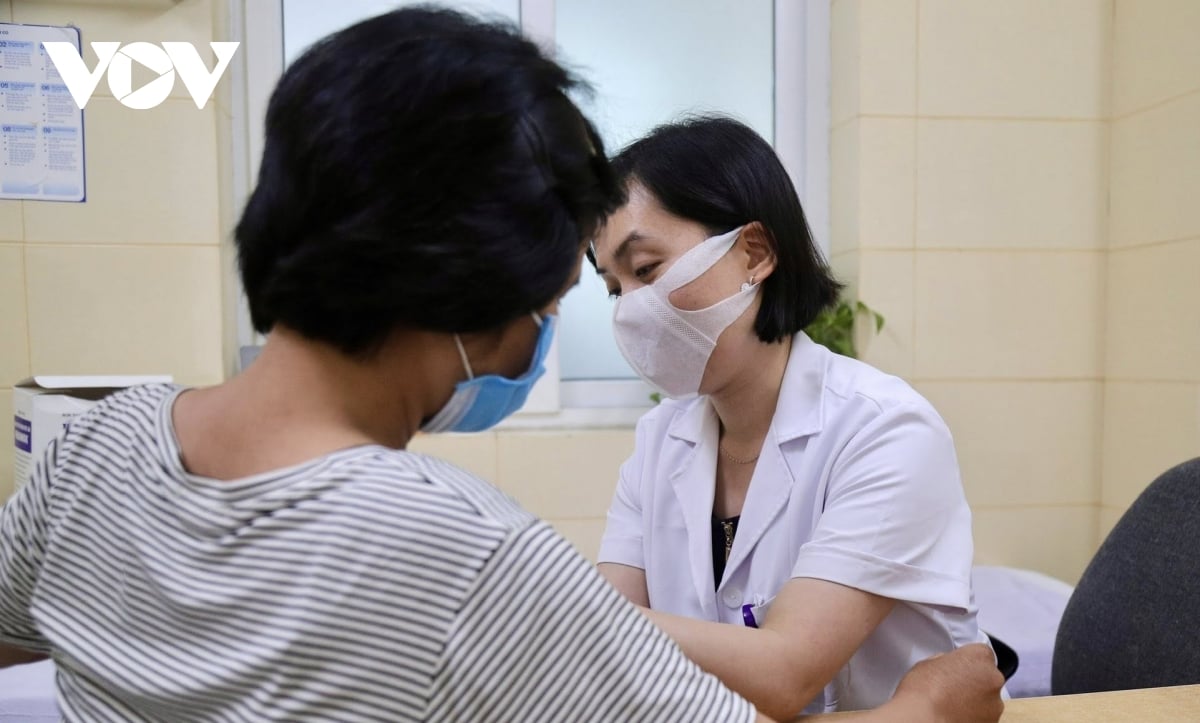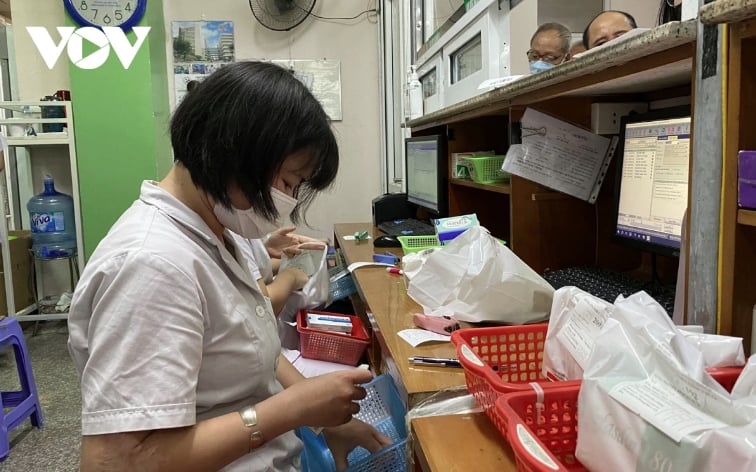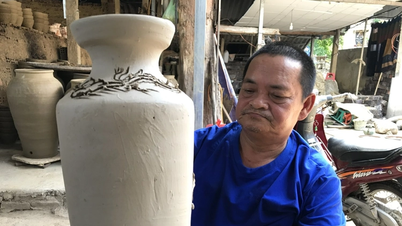With the promotion of Circular 26, outpatients can receive a full 3-month supply of medication at each visit. The new policy helps people, especially those in remote areas, save time and travel costs, while also reducing pressure on the often overloaded health system.
Outpatients are excited to receive medicine every 3 months
In order to tighten the prescription process, use drugs safely and reasonably, and improve the quality of medical examination and treatment, on June 30, the Ministry of Health issued Circular No. 26/2025. One of the points that patients are most interested in is the new regulation that extends the time to provide outpatient treatment drugs to a maximum of 3 months/time instead of once a month as before.
At the Breast Clinic, K Hospital, on the first day of applying the new Circular, many patients were excited to hold in their hands a prescription for treatment sufficient for the next 3 months.

Patient LTT (43 years old, Hung Yen ) said that in 2024, she was diagnosed with stage 2 endocrine right breast cancer. This woman had to be hospitalized for surgery and then received 6 chemotherapy treatments. At the end of 2024, she was transferred to the radiology department, received 15 radiation treatments and was forced to go home for monitoring and regular check-ups.
According to the check-up schedule, she goes to the hospital every 3 months. However, the medication must be taken monthly. She has to take time off work every month to go to Hanoi to get the medication, which costs a lot of money in terms of travel and food.
"Now I only need to go for a check-up and get medicine once every 3 months, I feel so relieved. This is truly a very humane policy, bringing great benefits to patients like us," said Ms. T.
Sharing the same sentiment, Ms. NTM (Tuyen Quang) said that each trip to get medicine usually takes her all day, sometimes accompanied by tiring waiting.
"I was really surprised and happy. Now that I get medicine every 3 months, I not only save on travel costs but also avoid having to take time off work many times. This is the wish and desire of each of us patients when it comes to getting medicine, especially those in outlying areas who do not have the conditions or time to travel too much to the city or hospital," Ms. M. confided.
In fact, the policy of providing long-term treatment drugs was applied flexibly during the Covid-19 period to limit large gatherings and reduce the risk of infection. Now, Circular 26 has formalized this regulation, turning what was once a temporary solution into a long-term policy, supported and expected by patients.
Not only patients, doctors at K Hospital also said that this is a positive change, contributing to reducing pressure not only for patients but also for medical staff. Doctors and nurses will also be less pressured by patient overload, improving productivity and quality of medical examination and treatment.
“Prescribing for more than 30 days, I don't have to "bend" the law anymore”
Associate Professor, Dr. Nguyen Lan Hieu, member of the 15th National Assembly and Director of Hanoi Medical University Hospital, said: "For a long time, I have been making follow-up appointments for chronic diseases such as high blood pressure, diabetes, etc. for more than 1 month. The most difficult thing is that the Ministry of Health's regulation of not prescribing for more than 30 days makes my pharmacists not dare to dispense/sell more than the prescribed amount of medicine.
Then I had to think of a way to prescribe medication by day and write at the end of the prescription: "take the full dose as directed until the next visit." So the patient and the pharmacy understand to have enough medication for 3, 6 months or even 1 year (if there are no special developments) until the next visit.
Mr. Hieu said that he had spoken out many times on forums about this issue. Initially, he thought that the health insurance was against it, but on the contrary, this unit supported it and spoke up. Because if monthly re-examination is not effective, it will be costly in time and money (tests, ultrasounds, electrocardiograms, X-rays...) and especially cause virtual overload of hospitals.
“So glad to finally Circular 26/2025 of the Ministry of Health has been issued, regulating the prescription of drugs for more than 30 days for chronic diseases. My colleagues and I no longer have to "dodge" the law," said Mr. Hieu.

Mr. Nguyen Lan Hieu also emphasized that the biggest concern is autonomous hospitals, especially at the district level, when the number of outpatients will certainly decrease significantly in the coming months. Once again, he called for abandoning autonomy at district level hospitals and remote areas, and paying salaries to public health workers at the grassroots level, as the education sector is doing.
For hospitals, this is the stage where they need to develop techniques and change the way they treat patients to really help their local people. With the regulation of long-term chronic medicine, and the health insurance system, patients will not hesitate to move every 3 months to a place where they feel they are better cared for. Circular 26 can mark the innovation of the health sector that people have been waiting for for a very long time.
Long-term prescription based on thorough examination
According to Dr. Vuong Anh Duong, Deputy Director of the Department of Medical Examination and Treatment Management, Ministry of Health, long-term prescription of medication will be based on the clinical condition and stability of the disease. The doctor can decide the number of days of medication for each case, but the maximum will not exceed 90 days.
If professional guidelines, drug instructions or national pharmacopoeia do not specifically prescribe a duration of use, the physician still has the right to consider prescribing for up to 90 days, as long as it is appropriate to the patient's actual condition.
Another new point is that Circular 26 requires the addition of some mandatory information in the prescription. In case a patient visits multiple specialists at the same time, the hospital must arrange for the patient to have only one prescription, ensuring safety, avoiding duplication or unwanted drug interactions.
Dr. Vuong Anh Duong emphasized that not every disease on the list is automatically prescribed a long-term treatment. The doctor must examine and evaluate each case carefully to decide on the appropriate time: it can still be 30 days, 60 days or 90 days, depending on the patient's health condition, ability to comply with treatment and self-monitoring.
In addition, the prescriber is legally responsible for the signed prescription, ensuring that the medicine is appropriate for the diagnosis, safe and effective. In case the medicine is not used up but the disease progresses abnormally or the patient cannot return for a follow-up examination on time, the patient facility must return to the medical for re-evaluation and prescription adjustment when necessary.
Source: https://baohungyen.vn/quy-dinh-moi-lay-thuoc-3-thang-mot-lan-3182277.html

































































































Comment (0)